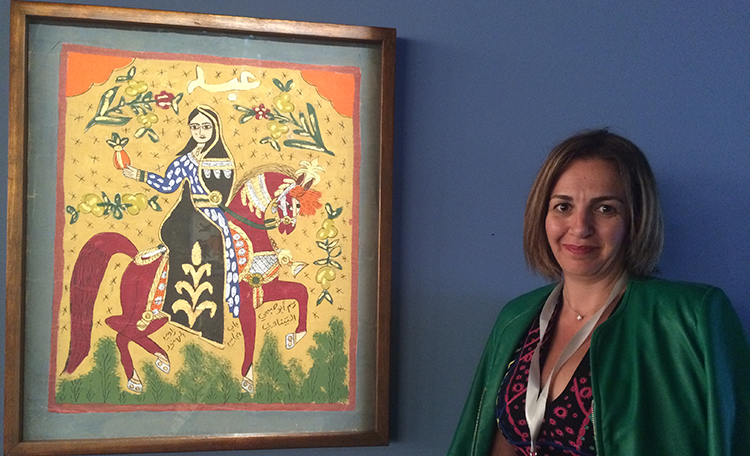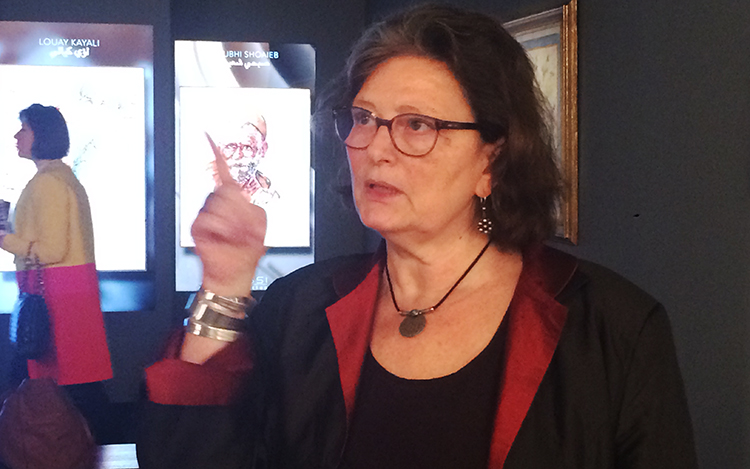
Written by: Zahrah Mazhar
Posted on: March 18, 2016 | 
Syrian art on display at Art Dubai
Now into its 10th edition, Art Dubai represents the growth of different art disciplines in the Middle East, South Asia, and Africa. This year, Art Dubai is featuring its biggest gallery line-up to date: 94 galleries and art spaces have brought more than 500 artists from 40 countries to the fair, which is being held at Dubai’s Madinat Jumeirah. From Spain to Istanbul and Beirut to Palestine, artwork from across the globe is being showcased in two halls marked ‘Contemporary’ and ‘Modern’ — the former is also hosting this year’s special project space; a specially commissioned mixed-media exhibition presented by the Atassi Foundation for Art and Culture.

For 30 years, the Atassi Foundation functioned as a gallery that represented some of the leading artists and thinkers of the time on a local and international level, and persistently pushed Syrian artists to the forefront. Given the unstable conditions in the country, the gallery recently transitioned into a non-profit foundation in a bid to more actively contribute to the Syrian art landscape. The family-run foundation’s unique private collection comprises 400 Syrian artworks, and its primary goal remains to promote local talent. The foundation’s project for Art Dubai, A Syrian Chronology, uses the Atassi Gallery’s 30-year archives to weave together the story of Syrian art, which is currently evolving with the political scenario.
“The current political situation is an extremely important one, and drastic changes are bound to take place in every aspect of the society, particularly the art world,” said Shireen Atassi, the foundation’s director, while overseeing the installation’s setup, along with her mother, Mouna Atassi, the foundation’s president, and Hala Alabdalla, a renowned Syrian film director.

The mixed-media installation includes four screens, each playing a five-minute synchronized clipping on a different phase of Syrian art. Produced by Hala Alabdalla and artist Khaled Barakeh, the installation aims to give an overview of the contemporaries, modernists, and pioneers of Syrian art—a massive feat, considering the time limitation. “It wasn’t an easy project,” remarked Alabdalla, calling the commissioned project an adventure. “The main challenge was to summarize Atassi Gallery’s 30-year journey into a few minutes. Due to the restricted time, we couldn’t give a comprehensive history; only a teaser to create curiosity [about Syrian art].”
The juxtaposed clippings convey varying themes and moods, but death and destruction are the most prevalent. “Displacement, war, financial constraints, and lack of ateliers forced Syrian artists to find new means of expression,” said Shireen. “They started exploring new mediums – photography installations and digital productions, as opposed to oil and canvas.”
When asked about the current situation of Syrian art, Alabdalla expressed her view that the artists had become more expressive in their work. “Following 2011, there was an explosion across all forms of art—photography, cinema, writing—in Syria. Now, everyone has the chance to express their views in whichever way they choose,” said the veteran artist. “Prior to 2011, themes were more symbolic and indirect; now artists as well as the audience are expressing their personal experiences more, and instead of only looking at the form, they’re also interested in the content.”
You may also like: